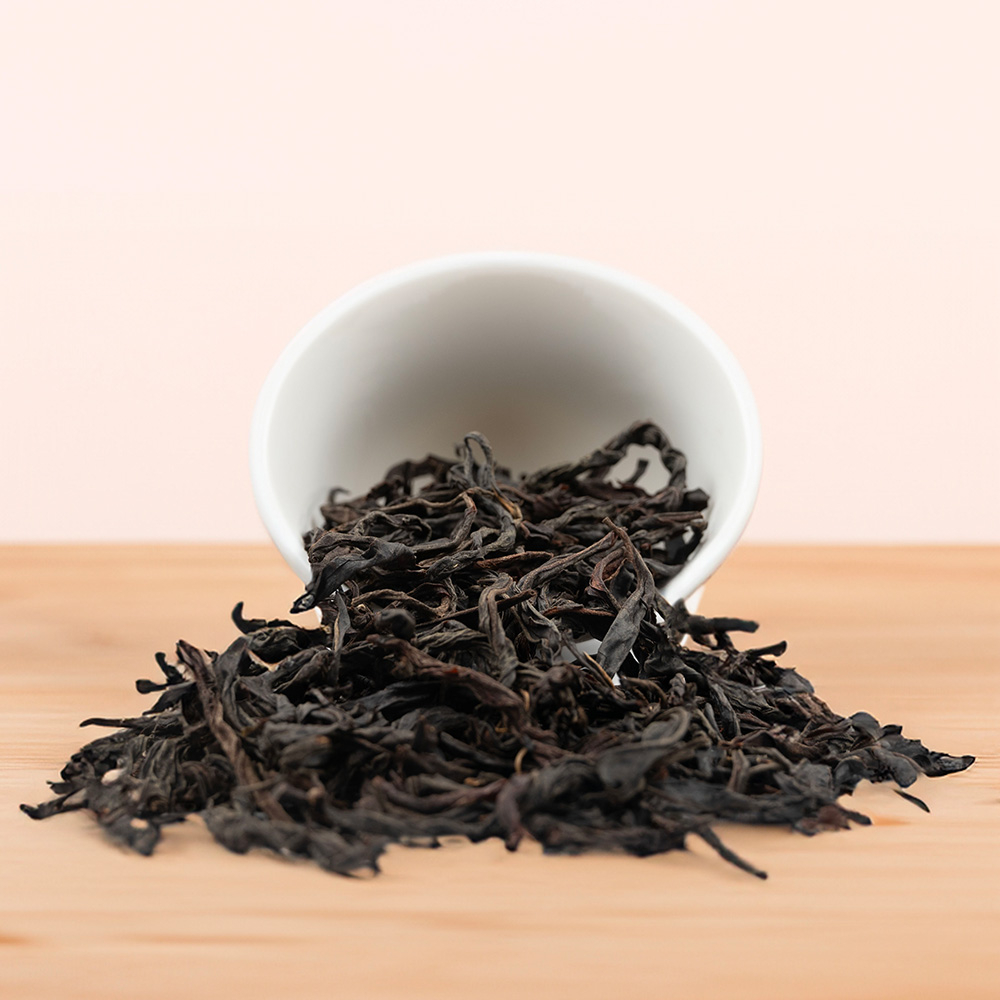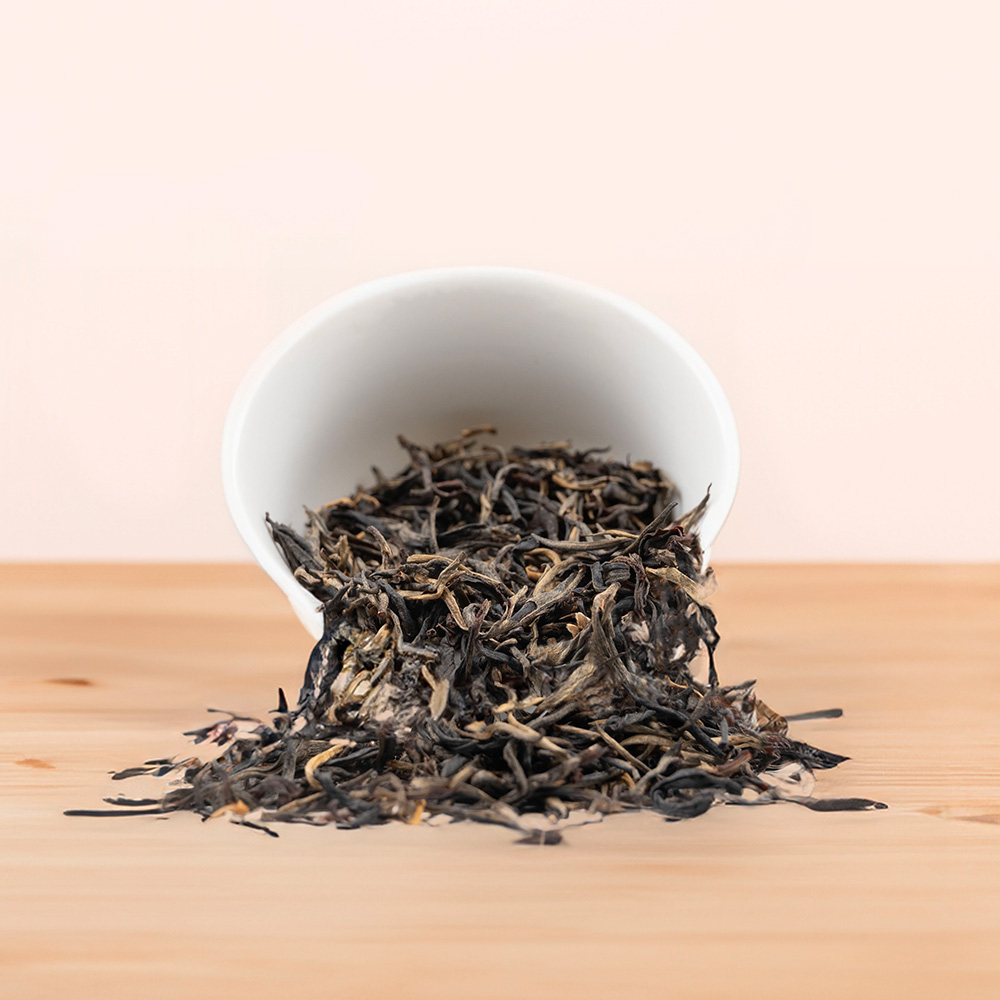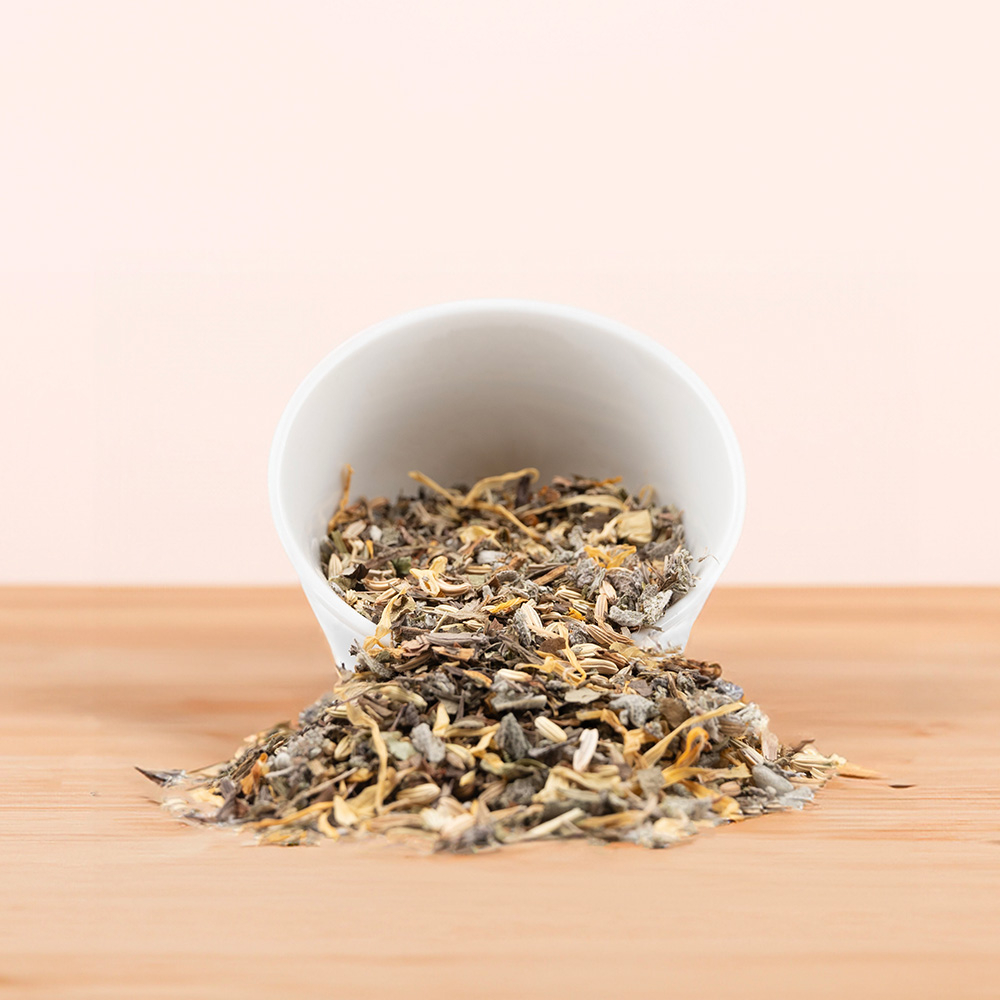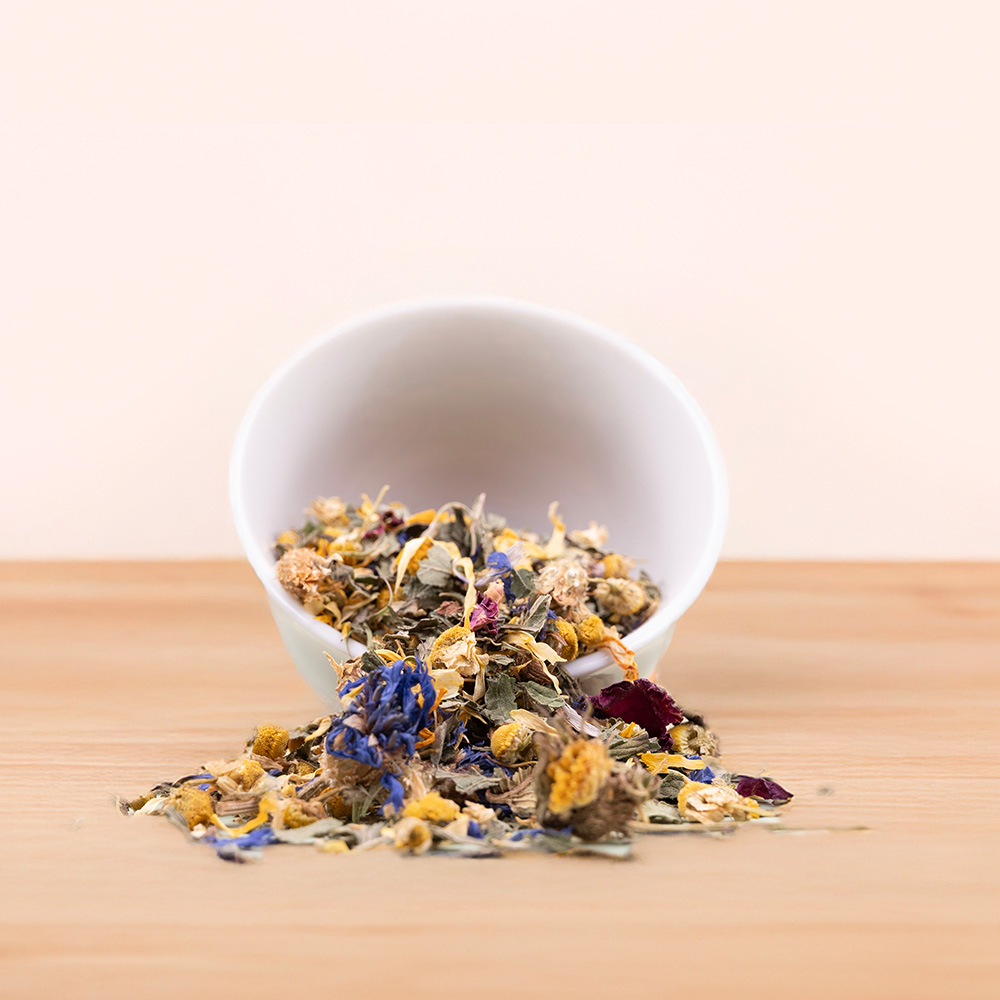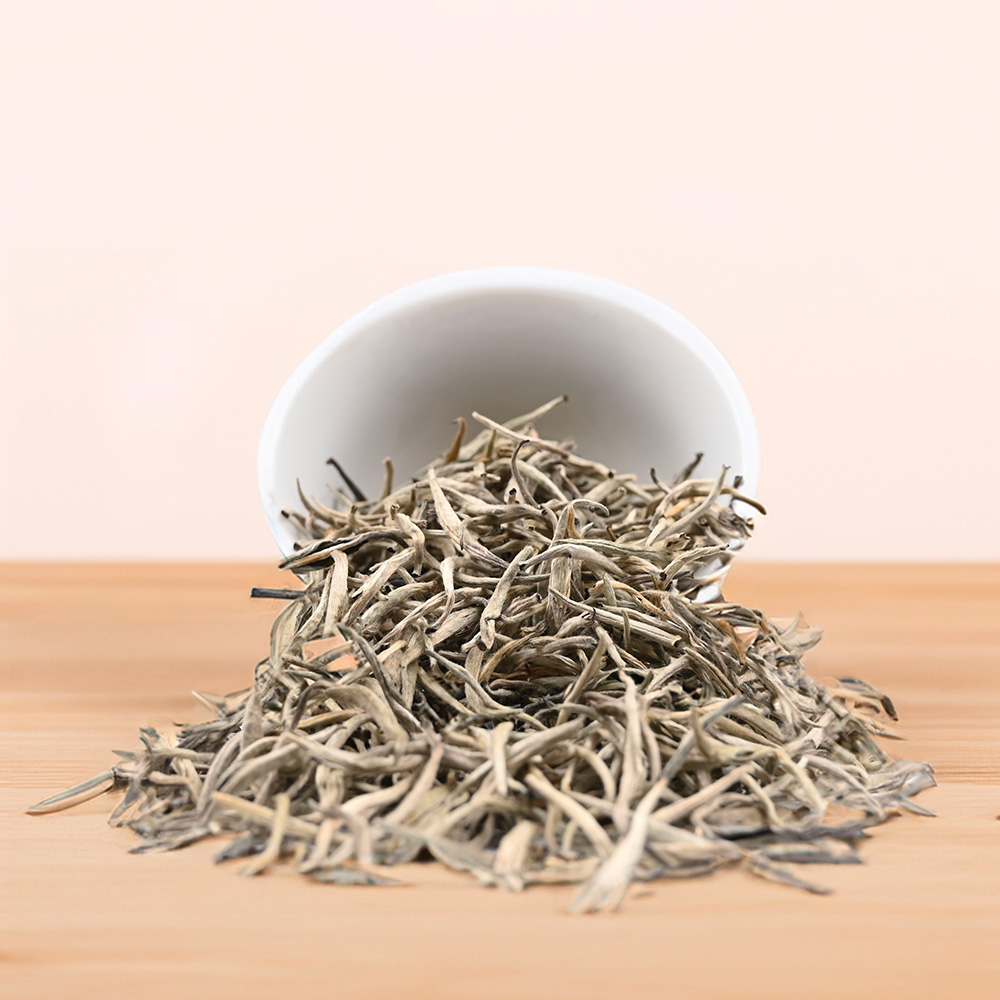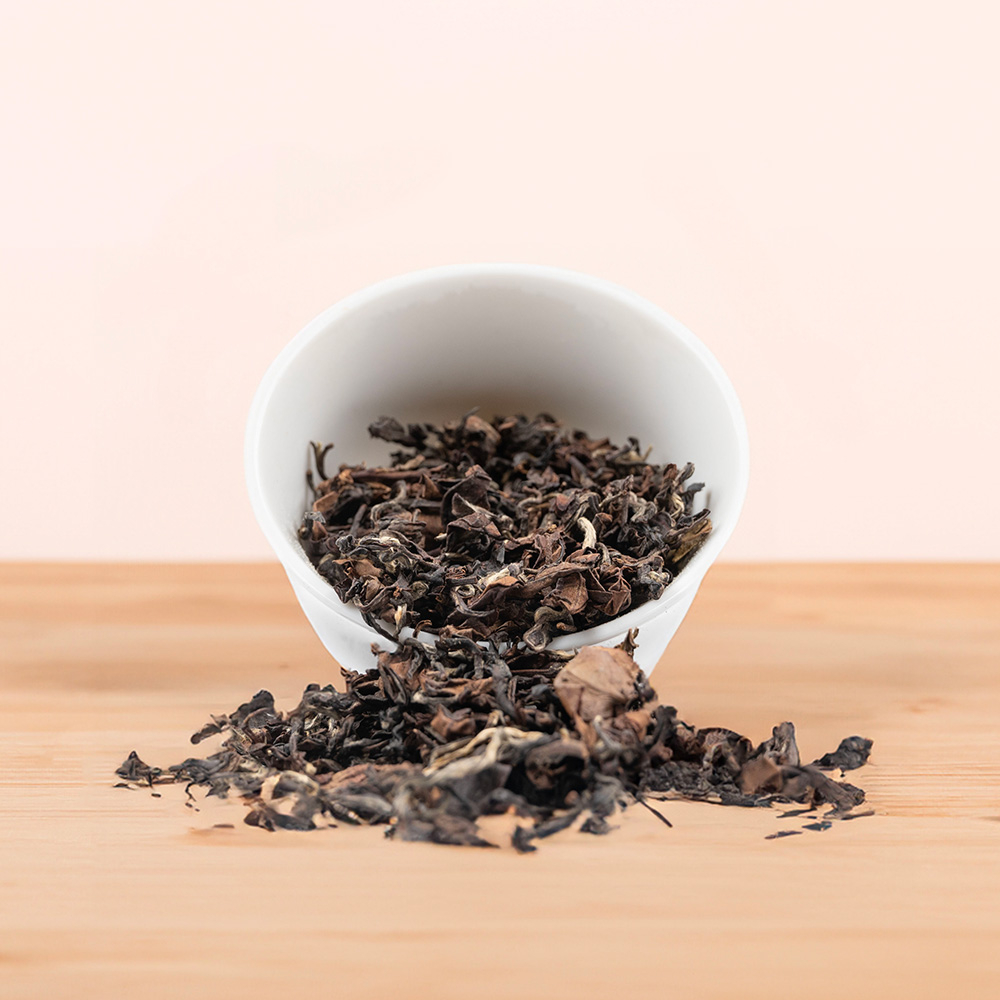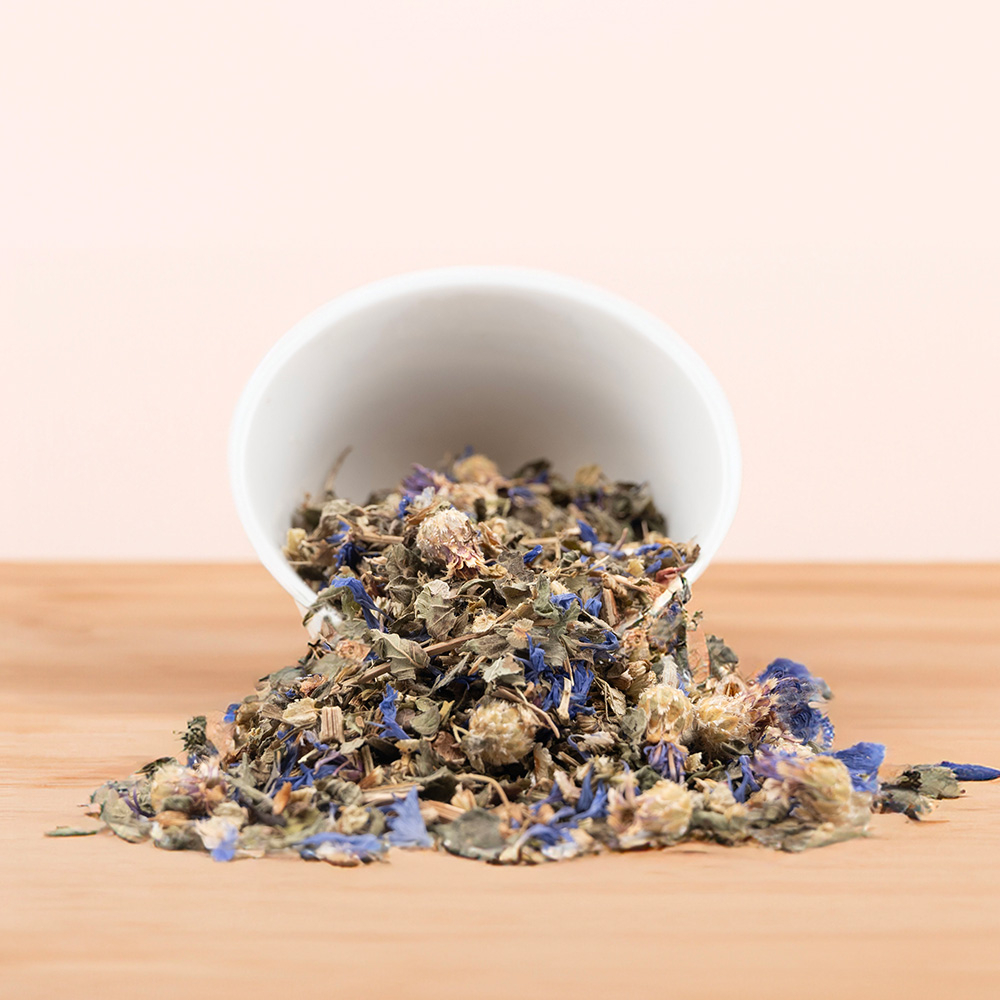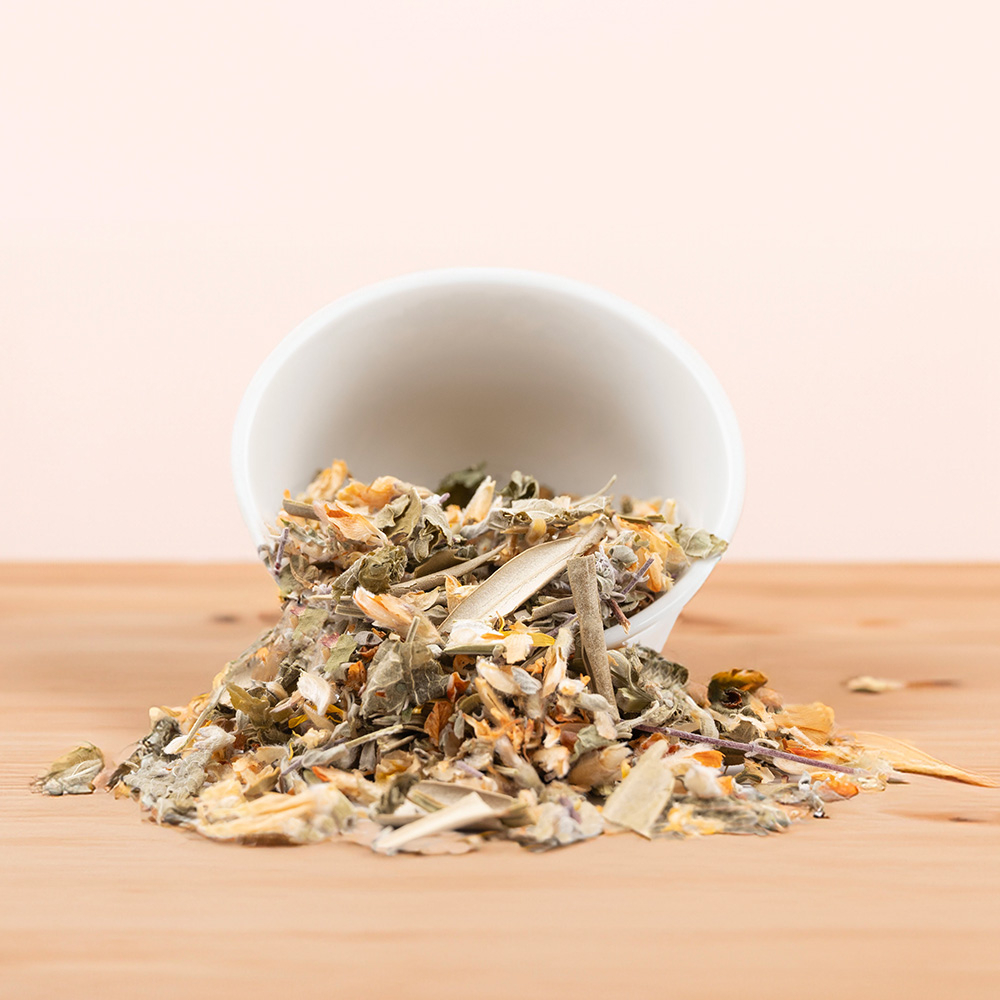Chamomile: A Herbal Elixir for Wellbeing
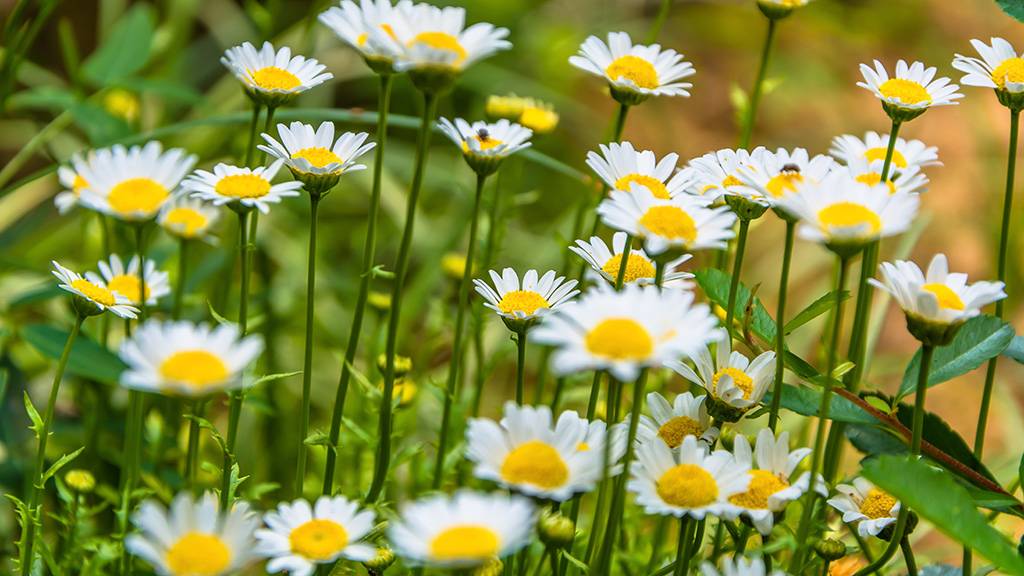
Chamomile, a gentle herb that has stood the test of time, holds a rich history of medicinal use. The term “chamomile” finds its roots in the Greek word khamaimēlon, translating to “earth apple.” With a history tracing back to ancient Egyptian, Greek, and Roman civilizations, chamomile seamlessly traverses through time, consistently charming natural health enthusiasts.
Folklore often portrays the chamomile flower as a symbol of patience and peace, and, notably, in Beatrix Potter’s The Tale Of Peter Rabbit, Peter indulges in chamomile tea. This humble herb has seamlessly integrated into teas, skincare, haircare, and various facets of health and wellbeing.
Within this blog post, we embark on a journey to uncover the history of chamomile, its wellness advantages, diverse types, flavor profile, and the numerous benefits encapsulated in a cup of chamomile tea.
A Brief History of Chamomile
Chamomile’s journey through history is marked by its use in ancient civilizations, including the Egyptians, Greeks, and Romans. The Eber’s Papyrus, an Egyptian medical papyrus dating back to 1550 B.C.E., recorded chamomile’s early use for medicinal purposes. The Greeks and Egyptians employed crushed chamomile flowers to treat skin conditions and fevers, with even the renowned physician Hippocrates acknowledging its therapeutic properties.
In the 10th century, chamomile secured its place as one of the nine sacred herbs in the Lacnunga, an ancient Anglo-Saxon herbal manuscript. Romans used it to alleviate headaches.
Over time, two varieties of chamomile emerged – Roman and German. Roman chamomile, discovered by a British botanist in the 16th century, found its way into the pharmacopoeia of Würtenberg, while German chamomile became an ancient remedy for cramps and sleep disorders related to premenstrual syndrome.
Through the Middle Ages, chamomile tea served as a diuretic and tonic for pain and fatigue.
Today, chamomile remains a versatile herb, cherished in cookery, cosmetics, and skincare products, particularly known for its calming effects on nerves and soothing properties for the skin.
What is Chamomile?
Chamomile, belonging to the Asteraceae family, has around 18 species and comes in two main varieties: German chamomile (Matricaria chamomilla) and Roman chamomile (Chamaemelum nobile).
German chamomile, commonly used in teas, grows upright and stretches towards the light. On the other hand, Roman chamomile, with a creeping, ground-cover growth pattern, is less favoured for its taste.
Chamomile’s soothing embrace offers natural remedies for stress relief, improved sleep, and enhanced digestive health. It’s a gentle herb that can seamlessly integrate into daily routines for a tranquil and wellness-focused lifestyle.
What Does Chamomile Tea Taste Like?
Chamomile tea, crafted from the flowers of the herb, presents a floral and slightly sweet taste. Depending on the steeping time, a subtle earthy undertone may emerge. The quality of the tea also influences the taste.
Chamomile’s notable chemical compound, bisabolol, contributes to its honey and apple-like aroma, evoking memories of apple crumble preparation. The sensory experience extends beyond the taste, as chamomile’s aromatic qualities make it a delight for the senses.
What is Chamomile Good For?
Rest and Relaxation:
Chamomile’s calming effects, driven by key compounds like chamazulene and bisabolol, interact with stress and anxiety receptors, promoting relaxation.
Stress Management:
With its active ingredient apigenin, chamomile exhibits anti-inflammatory, anti-spasmodic, and anti-anxiety properties. Apigenin’s binding to benzodiazepine receptors reduces anxiety, promotes sleep, and decreases cortisol levels, offering a holistic approach to stress management.
Beyond cortisol regulation, chamomile’s anxiolytic effects extend to its influence on neurotransmitters, notably serotonin and dopamine. As these neurotransmitters play a crucial role in mood regulation, chamomile offers a holistic approach to stress management. Additionally, chamomile’s antioxidants alleviate symptoms of chronic anxiety, offering tranquillity in busy schedules.
Better Sleep:
Chamomile tea serves as a natural sleep aid, recommended for those struggling with insomnia or restless sleep patterns. Good sleep enhances immune function, and chamomile tea’s phenolic compounds improve sleep cycles, bolstering immune response and supporting overall health.
Completely Caffeine-Free:
With zero caffeine, chamomile tea avoids diuretic effects associated with caffeine, promoting better absorption of essential vitamins and minerals.
Digestive Health:
Chamomile’s anti-inflammatory properties make it beneficial for soothing the digestive tract. It can alleviate symptoms of digestive issues, including nausea, indigestion, and irritable bowel syndrome.
Skin Health:
The antioxidant properties of chamomile extend to skincare also. It can soothe skin irritations and promote a healthy glow, with bisabolol known for its anti-irritant and anti-inflammatory qualities.
Supports Immune Health:
Regular consumption of chamomile tea may boost the immune system, aiding in defence against common colds and infections, combat harmful bacteria, reduce swelling, and ease nasal congestion. Infusions accompanied with lemon, ginger, and honey may work wonders against a cold!
Blood Sugar Control:
While not a weight loss aid, chamomile tea may help control blood sugar levels. In a clinical study involving individuals with type II diabetes, three cups of chamomile tea daily led to lower blood sugar levels, reduced insulin, and decreased tissue protein damage.
Thyroid Protection:
Regular chamomile tea consumption over 30 years is linked to a 74% lower risk of benign thyroid disease and a 70% lower risk of thyroid cancer, according to a population study. This association persisted even when considering factors like age, sex, weight, and lifestyle habits.
Is Chamomile Safe During Pregnancy?
Chamomile, naturally caffeine-free, is generally considered safe for most people, including pregnant individuals. It is often recommended as a natural remedy for various pregnancy discomforts. However, consulting with healthcare professionals for major dietary or lifestyle changes during pregnancy is advisable.
How to Brew Chamomile?
For a soothing cup of chamomile tea, start by bringing water to a boil (100°C) as most herbs need simply boiling water without any complications temperature-wise. Add 2 teaspoons (2 g) of dried chamomile per approximately 200 ml cup. Pour the hot water over the chamomile and allow it to steep for 4-5 minutes. Although it may seem like a prolonged duration, this step is crucial for infusing the tea with the full spectrum of flavors and beneficial compounds.
After steeping, strain the infusion to remove the chamomile blossoms. Customize your brew by adjusting the taste with your preferred sweetener and perhaps a slice of lemon for an extra touch of zest. Get creative with your combinations! Voilà, savor the calming and delightful experience of chamomile tea.
At Tea Kulture, explore our diverse chamomile infusions, including the Chamomile Ginger from Nepal, the Offline blend from Wilder Land (the Netherlands), and the I Love and Chamomile Dream herbal mixes.
